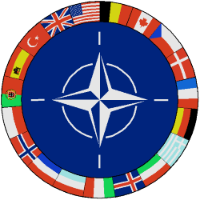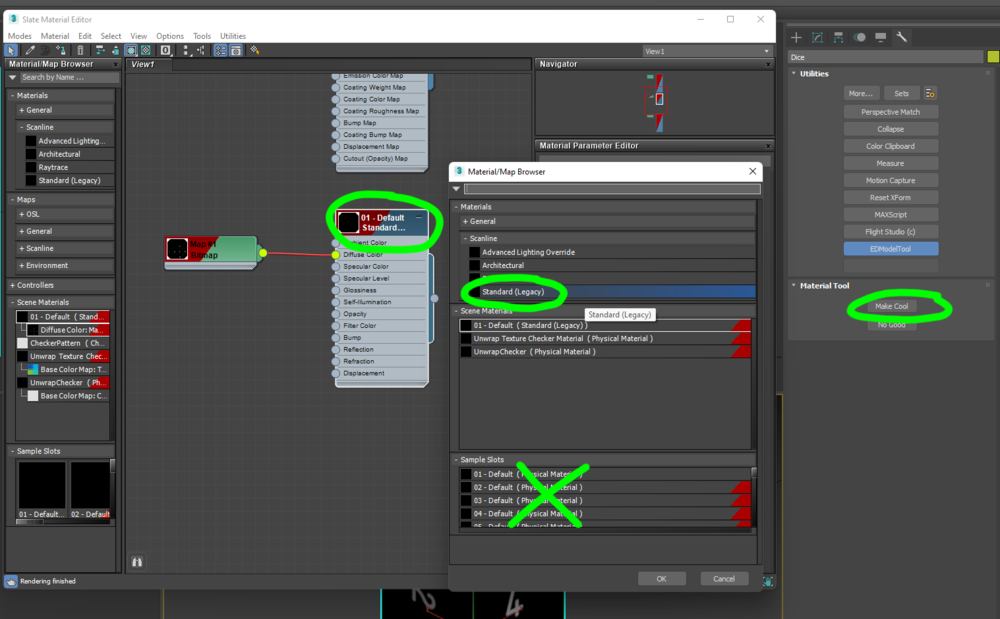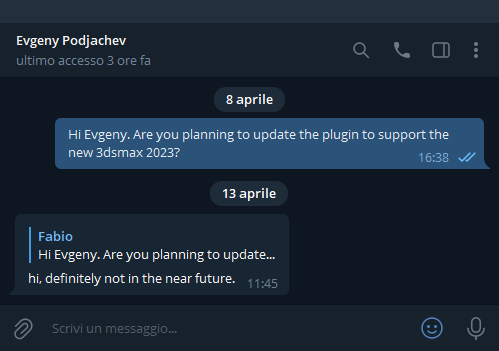-
Posts
1427 -
Joined
-
Last visited
-
Days Won
3
Content Type
Profiles
Forums
Events
Everything posted by Automan
-

MB-339 - Skinners' corner (paintkit in first post)
Automan replied to 6S.Duke's topic in DCS: MB-339
Maybe the dds plugin of gimp. Try saving as png. If the problem is still present check the export options: I think that GIMP is cutting some of the blank pixel on the left of the template, so all the image is shifted. -
Your comparison is not fair: on ED shop the full price of the other 2 trainers is 59.99$, exactly like the 339. Now those 2 trainers are on sale due to Halloween sale window, and are out since more than 3 years. Moreover, even if not feature complete or bugfree, this product is not released in Early Access, so not eligible for a discount price at release.
-

Is the gunsight operation mode setting applied at present?
Automan replied to Torbernite's topic in DCS: MB-339
The changing of operating modes was working before release. This is a confirmed bug. Thanks, we will fix ASAP. -

MB-339 - Skinners' corner (paintkit in first post)
Automan replied to 6S.Duke's topic in DCS: MB-339
Maybe a corrupted download: if not already done, try redownload the template. Another advice: PSD is a native format used by Adobe Photoshop: the PSD importer of GIMP may not work as expected and some features may be disabled (ie. smart objects). You can try with the developer version of GIMP, that hopefully should improve PSD compatibility: GIMP - Development Downloads -
Hi, the price tag is in line with the other 2 jet trainers competitors on this plaform, the L-39 and the C-101.
- 75 replies
-
- 11
-

-
Wet runway? In this case keep pushed the relight button of your throttle during all the takeoff run.
-
Ok, the modules shop description is not maintained directly by us, we are contacting ED to correct the misname. Thanks
-
Where have you seen this misname? We have introduced this weapon, always reported as BAT-120 in the description.
-
Formalmente esiste un solo MLU per il 339, tuttavia l'iter di conversione è stato lungo, le prime modifiche al velivolo ditta risalgono al 99 e si sono concluse nel 2005. Pertanto dal 2006 si possono trovare già i primi velivoli aggiornati a tale standard e mi pare che già dal 2007 tutti i velivoli PAN avessero completato la conversione. L'MLU ha comportato l'introduzione del sistema AHRS/GPS, la nuova radio V/UHF SRT-651/N, luci di formazione, crash recorder, localizzatore di emergenza ELT, sistemi diagnostici di rilevazione deformazioni ASC e la rilocazioni di alcuni componenti avionici come l'IFF in posizioni più ergonomiche (prima posto di fronte allo stick, poi spostata sulla console dx). Nel corso degli anni tuttavia, a beneficio di sicurezza ed operatività, erano già state effettuate alcune modifiche sui velivoli italici, per cui si può dire sia rimasto dal debutto in periodico aggiornamento. Fra tali aggiornamenti, la cosa più visibile è stata l'introduzione delle taniche cilindriche da 500L che successivamente ha comportato anche l’adeguamento degli attacchi con l'adozione della disconnessione rapida, principalmente a beneficio dei lunghi trasferimenti dei velivoli PAN che impiegava meno tempo per la riconfigurazione del velivolo. Ma anche dettagli minori come le mini-fences (deflettori di strato limite), che troviamo retroffittate sulle semiali dal '90 ed altre cose non visibili ad occhio nudo come un nuovo sistema anti-skid più efficace. In cockpit poi, fu introdotto un nuovo fuel gauge analogico/digitale di più immediata lettura. C'è poca documentazione in merito ma è lecito pensare che i velivoli esteri oltre a non avere generalmente goduto delle stesse attenzioni (probabilmente per motivi economici) avevano piccole differenze di dotazioni radio e cockpit layout tra loro: da qui le varie denominazioni interne AA(Argentina), AP(Perù), AD(Dubai/UAE), AM(Malaysia). In merito al servizio estero, come noto l’Argentina che fu fra i primi paesi, fu anche il primo a dismetterli in quanto dopo la guerra dell’82 gli esemplari superstiti erano pochi e risultava antieconomico mantenerli in servizio per cui già nei primi anni novanta, terminati ricambi/ore volo, alcuni furono musealizzati o venduti a collezionisti, mentre paradossalmente rimasero in linea i più vetusti 326 fino al 2007... Il Perù, dopo un periodo di messa a terra per problemi di acquisto ricambi, lo ha avuto in linea fino al 2012: i velivoli riattivati furono aggiornati con un sistema GPS posticcio(Garmin GPS100 appoggiato sulla palpebra) montato in loco senza ausilio della casa madre. Una curiosità fu l'uso acrobatico come Los Diablos Rojos, in quanto non avendo impianto fumi si divertivano a scaricare una nuvola di carburante con il fuel dump. Gli Emirati Arabi Uniti, fra il 1984 ed il 1992 hanno ricevuto 7 esemplari ad uso trainer. Dopo una lunga fase di stop, nel 2010 hanno ordinato ulteriori 4 velivoli (A pre-MLU ex-AMI) e portarono i loro vecchi A superstiti per la riconversione in NAT (in uso dalla neocostituita pattuglia la Al Fursan) con luci di formazione e mini-fences: in cockpit fu montata una staffa alimentata per gps portatile garmin, per il resto il layout era indistinguibile dai primi A, se non per il nuovo quadretto luci per le formation light. La Malesia ha avuto in linea gli A fino all'arrivo dei primi 339CM, quindi gradualmente è iniziata la dismissione fino all'accantonamento intorno al 2009. La Nigeria aveva anche esigenze acrobatiche per cui 4 seriali furono dotati di impianto fumi (al pari dei PAN nostrani): i velivoli furono in uso presso la scuola di volo di Kano poi rimpiazzati dagli L-39, ma una unità fu costituita su Calabar al confine con il Cameroun per la difesa dello spazio aereo (slow mover interceptor) Il Ghana fu l'ultimo ad acquistare il 339A ed i loro velivoli chiaramente poterono godere da subito di alcune migliorie (minifences) ed optional di serie (taniche da 500, eccetto il primo veilvolo): furono in uso presso la scuola di volo di Accra, in sostituzione del 326 biposto ma già nel 2016 risultano accantonati. In merito agli armamenti, è documentato fotograficamente che Argentina e Perù si fecero in casa prove a fuoco con i più disparati pod, lanciatori e bombe free-fall: d'altra parte per questi 2 paesi le Falklands ed il Cenepa furono 2 guerre che portarono ad estremizzare anche l'uso del 339 come aereo di attacco in contesti ad elevato rischio dove forse la sopravvivenza e riuscita della missione era più dettata dal caso che dalle caratteristiche di macchina/pilota.
-
In 3dsmax 2021+ the new "Standard" is Physical material, so the "old" standard has been renamed to Standard (Legacy): they are the same thing but have another name between 3ds versions. After make cool, your ED material type should be automatically set to Default: in this case of Default, you can simply connect the diffuse map, and a normal map if needed. The specular system is now obsolete, you can make the graphic engine load your roughness map (define ambient occlusion, glossiness and metallicness) simply attaching _roughmet text to your diffuse map (ie. diffuse texture is XYZ.dds, your roughness texture must be XYZ_roughmet.dds). For any documentation about creating roughmet maps and channels manipulation, see the guide done by Skatezilla posted here:
-
To make your edm visible, the materials must be set properly: you must change from Physical Material to Standard (Legacy). Then for every new material introuced, you must set EDmodelTool from Utilies Panel and apply MakeCool before export edm. For Modelviewer, use the one inside DCS/bin folder and put the texture in DCS/Bazar/TempTextures or mount them via menu.
-
We are using version 198146 with 2022. The one available in ftp is probably buggy, since Evgeny told me that the compiler stopped months ago and he is focused in another task. The 198146 is also one of the latest that doesn't ask for bounding box in export. edm-plugins-198146.exe
-
Using this hint of chichowalker, I would say that with more than 500kts, a depression of 125 should be enough.
-
Yes, I would say the same reading the weapon scheme, but well... documentation of latest Durandal is frammented and sometime discordant (even from reliable sources...), so some assumptions were made. As a prologue, the Red Flag ‘88 that involved runway denial missions with F-111 and Durandal, while performed well in flat desert with surprise effect, showed limitations in case the strike would occurs in areas not viable for low approach and high speed, like an airport with surrounding mountains or placed in a valley depression. So USAF ordered further testing on F-111 and Durandal II to achieve an alternative solution of employment. The test flights occurred between 1988 and 1989 and since mentioned higher altitude profiles of up to 3000ft, we assumed a radar altitude device or a ground proximity sensor would be necessary to control the delay of the rocket motor to do the right job, like the design of BetAB-500ShP (russian Durandal with steroyds...) that when bomb reaches 150m AGL the rocket motor is fired. But we can only speculate about this, unless we have a reference of a USAF's weapon system specialist that manipulated them over 30 years ago. By the way, the test were unsuccesful, with a lot of mishaps, ricocheting, half penetration and the reccomandation of 250ft and a maximum height below 1000ft was retained.
-
Hi, IndiaFoxTechEco have officially introduced this common bomb (like BAT-120 and BAP-100) to the database, not Aerges: the bomb is platform independent, we have tested them with our MB-339, but the Mirage F1 is not different. So, the Durandal we have in DCS is based on BLU-107B (Durandal II) data: optimum profile is straight levelled at 250fts and fast (maximum 630kts). The braking force of the first chute (deceleration chute) is very strong and it will decelerate the bomb to 25m/s. At that speed it will detach and trigger the deployment of the 2nd chute (main chute) that will stay in position until the optimal angle to avoid ricochet is reached (almost 40°). After that, the jettison of the chute will automatically ignite the rocket that will boost the bomb to 250m/s, a sufficient speed to penetrate In the eighties, a lot of testing were performed by USAF at Eglin to improve the original Durandal: the latest tests included dropping at 1000ft with F-16A, and others between 300 to 500ft with F-4D. Even if Durandal have an internal altimeter to delay the rocket motor ignition (the boost will last only half of a second), the test for profile different from 250fts were 1 miss to 2 hits(66% reliability), significantly worse then the 96% performed with lower profile. Considering that flight were performed levelled and straight over the runway, the miss occurred mainly for ricocheting (more height expose bombs to wind factor that can alter the optimal angle and/or due to not enough energy to penetrate the concrete in case of a premature rocket initiation) than for overshooting. Actually the Durandal altimeter and fuzing delay is not emulated in DCS, and other effects should be adjusted later. BTW, we hope you are enjoing this weapon, along the beautiful Mirage F1 introduced by our friends of Aerges. Cheers.
-
No, the bomb of Deka Ironworks is the Type200, a chinese clone of the early Durandal of the '70: the same is built as HAFR-2 by Pakistan. Although the standard Durandal and the BLU 107/B (also recognized as Durandal II) appear very similar except a bulkier wrapper casing, the latest revision of the mid-'80 features a steeper impact angle to improve the perforation performance and a modified parachute braking system to allow deployment at the higher speed (630kts): they were modifications requested to Matra by USAF after intensive testing in different platforms (F-4,F-111,F-16). We have created the code of BLU-107B from the scheme of BetAB-500ShP, a russian anti-runway bomb with similar behaviour except for the missing deceleration chute. We have adjusted parameters to reach a quite good level of fidelity, the only missing thing is the integrated altimeter that would increase the deployment delay of the main chute: this would allow to release at a greater altitude of 1000ft instead of the optimal profile (450~630kts at 250fts). Btw a greater altitude would not be sufficient to evade Shilkas: instead would semplify them since at very low altitude their radar suffers from ground clutter....
-
We have introduced all our weapons more than a year ago, before sending MB-339 to ED: then the process of official integration started and all the data we retrieved were validated by Eagle Dynamics, as required by new weapon policy control. So Durandal were first loaded and tested on MB-339 (by ED tester team obviously), before any other aircraft, but yes, the Mirage F1 is actually the only publicly available module that can carry them. The same validation process was adopted for all other weapons we introduced, some specific to our ac and some of common use like BAT-120 and BAP-100: the model and working behaviour (flight envelope) was studied and replicated. Our BAP-100 now are the official weapons integrated by Eagle Dynamics, even if M2000 is still using its proprietary model/texture/code (we don't know when/if ED will request to switch 3rd party content to official one) Since we are in the right topic, just a sneak peak of a runway interdiction: a private video with a preliminary MB-339 in the works (more than 1 year and a half ago...doesn't represent the final product), to show launches of BAP-100 from the six 14-3-M2 adaptors
-
Durandal were developed by IndiaFoxtEcho for their MB-339A, and incorporated by EagleDynamics: they are not introduced by Aerges 's Mirage F1. By the way, the MB-339 will have them along another interesting runway interdiction bomb, the BAP-100
-
-
Con la revisione del forum la sezione whishlist è un pò più nascosta, ma si trova qui: https://forum.dcs.world/forum/339-dlc-map-wish-list/ In merito al tuo desiderio, non sei il solo... Questa mappa del post l'avevo idealizzata anni fa nei limiti dell'engine terreno rimanendo entro i 900km quadrati: interessantissima per i molteplici utilizzi, da Deny Flight del 93 ad un ipotetico scenario futuro di contrapposizione alla Serbia(ultimo paese RED...), ma anche riutilizzare il tutto da Amendola in giù per un eventuale scenario Libico. Tuttavia sarebbe una opera mastodontica con i tool a disposizione adesso, con poca automazione e tanto da fare a mano impiegherebbe per almeno 4-5 anni a tempo pieno un team 2d/3d dedicato composto da una decina di persone...
-
-
While it is a pity that some weapons cannot be implemented like they was intended, it’s a real fact that for security reason AMI choose to not fire rockets in this dispenser: during further testing, armament specialists noticed that the temperature inside the tube, during a dive and at high speed, reached too hot values to be considered safe and avoid/prevent a premature rocket initiation. This occurred for aerodynamic reason of the air attrition in the small 50mm tube with the airflow blocked by warhead. In the LR-25 aerodynamic fairing helped in prevent this behavior. About cluster bombs, neither the BL-755 nor the Belouga BLG-66AC(Anti-Char=Anti-tank) were realized by us, and particularly the first is an ancient model/code imported from old lockon, so I would not consider this near fidelity of working. We are not aware when ED, that now wants to have control over all 3rd party weapons too, finds time and sources to develop further these cluster bombs.
-
1)Yes, you must remove some fuel to carry heaviest configurations and be within mtow limit. Keep in mind that weight of the 6 pylons and the tips matter. And just to remark a note about the tip tanks: in the 339A they really are not a loudout like a fuel tank would be, instead they have always been considered an integral part of the wing until Aermacchi adopted a quick disconnection system introduced later with 500L version (cylindrical shape). This was so true that in old dash 1 the total internal fuel was referred to the sum of fuselage and tip tanks while the clean configuration was indicated as the a/c with tt... Just to say, I would not consider realistic for a combat mission going without tips: except for some rare demonstration in the past, the 339A needs them since the fuselage tank is not sufficiently safe to provide range and a reserve for a typical CAS mission (180nmi in low level, and 4 x Mk82). Unless to conduct a suicide mission, without AAR, the fuel balance is always crucial: more fuel means more time you can help your troops before rtb or remain on target for 2nd pass, etc So, choose the right balance of ordnance/fuel for your mission, tip tanks mounted and LO-LO-LO profile 2)Well, the weapons delivery manual doesn't provide further details on bombs different from slick Mk-82 (arming position N/T or T only) but says that the same procedures are used for weapons of equivalent class except for the dispenser BRD-4-250 for which the SAFE position should be used to fire rockets(not implemented for DCS limitation on double-use weapons) while N/T is for release of mk-76 or mk-106 bombs. By the way, it's true that on Snakeeyes the fins are kept closed with a release band locked by a cotter pin connected to the Tail arming wire: if the relative fuze solenoid is active during launch the pin will be pulled and the band will free the fins, otherwise they will be like free-fall Mk-82. We must still request assistance with ED for an hypotethical implementation, since for realistic working the arming wire should be connected inverted by the armament specialist: infact, the 339 doesn't provide nose only fuze switch in the armament cp and the tail only solenoid (by default connected to tail arming wire) should be connected to nose arming wire for working like F-5 or F-14.




